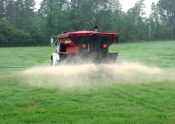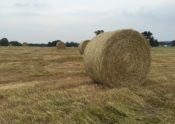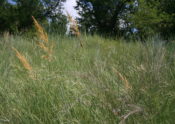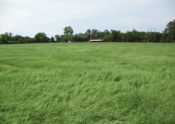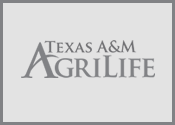
February is the time for forage managers to begin waging war against this pest. Many Cenchrus spp. go by grassburs, sandburs, stickerburs, or other names. This genus includes annual and perennial grasses that produce a pain-inflicting seed head. The burs that house the seed not only have spines but have fishhook-like barbs that grip what they have grabbed (Fig. 1). There are three native species of sandburs in Texas that make up most infestations. These are also referred to as grassbur by many: field sandbur – Cenchrus spinifex … Read More →
